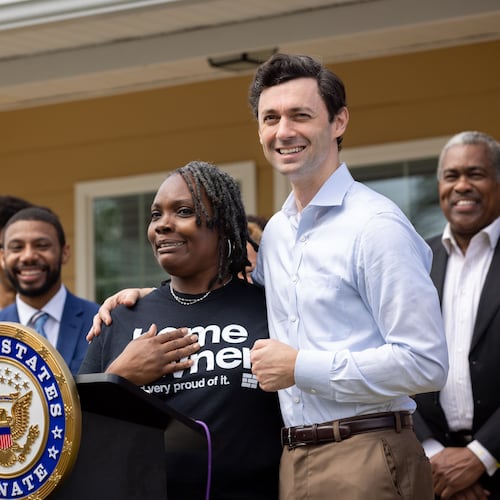On a spring morning, Kamal Adhikari hopped in his Chrysler 200S and made the 30-minute drive from his home in a Seattle suburb to the Poo Poo Point Trailhead in the foothills of the Cascade Mountains.
When he arrived at 10 a.m. the trailhead parking lot was full.
He ended up paying for parking at a private lot down the road. Then he hit the trail for the nearly four-mile round-trip hike that winds 1,800 vertical feet up Tiger Mountain to its namesake vista, Poo Poo Point, where paragliders soar into the air and views on a clear day stretch all the way to the Coast Mountains of British Columbia.
Adhikari doesn’t begrudge his fellow hikers for flocking to the trail. But the parking issues make Adhikari pine for Trailhead Direct, a seasonal bus service that runs from Seattle and its suburbs to nearby trailheads.
The service did not run in 2020 due to the COVID-19 pandemic, but the popular route is returning.
Credit: contributed
Credit: contributed
In whisking hikers from busy downtown streets and light rail stations out to hundreds of miles of backcountry trails, Trailhead Direct represents what outdoor recreation groups and transit planners alike believe will be increasingly necessary in years to come: an alternative to driving for people who want to spend some time in nature.
“Not everyone has a car,” said Yvette Lopez-Ledesma, the Urban to Wild Director for the Wilderness Society. “Transit agencies need to ensure that whatever their limitations, people can access public lands with public resources like transit.”
With interest in outdoor recreation booming during the pandemic, an analysis by the Outdoor Industry Association found that newer participants in activities like hiking are more likely to be female, younger, living in an urban area and more ethnically diverse.
Enter transit-accessible hiking.
Metro areas with that sweet spot of fairly robust public transit and geographic proximity to trails offer car-free hikes in places like Boston, Denver, New York City and Vancouver.
But many of these trips are viewed as “transit hacks” that require catching a regular bus or train depositing the rider close enough to a trailhead.
Trailhead Direct’s innovation is to make the service a feature rather than a bug by providing dedicated service for those who might not otherwise piece together an itinerary that incidentally brings them close to a trail.
“Black, Latinx and Asian communities are three times less likely to live near parks and open spaces as white communities,” said Jackie Ostfield, Director of the Sierra Club’s Outdoors For All campaign.
“It’s an environmental injustice that there are so many people who don’t have access to parks and green spaces.”
Ostfield cited TriMet, the transit agency serving greater Portland, Oregon, that marks parks on the region’s transit map and even features as a component of the city’s signature 4T Trail.
Likewise, she said, the club’s Minneapolis chapter has spent a decade mapping out transit-assisted hiking and cycling outings, including an overnight camping trip to a state park. Trailhead Direct seized on its status as not-your-average bus to teach basic hiking etiquette via signage and brochures.
Providing a seamless transit-to-trails connection was the impetus behind Pasadena Transit’s Route 88, which ran shuttle vans on weekends in 2018 to connect riders from an LA Metro subway station to the popular Sam Merrill Trailhead, where hikers can access over 550 miles of trails in the San Gabriel Mountains.
An existing bus serves the residential Altadena neighborhood that backs up against the mountains, but it stops 1.2 miles from the trailhead. The new service took riders straight from subway to trail.
The pilot service only lasted six months, however, and resident complaints about noise appear to have stymied the trail shuttle’s return.
Ultimately, Trailhead Direct and Pasadena Transit Route 88 illustrate how specially branded transit-to-trails service can be a double-edged sword.
Both operated with dedicated funding streams.
In Trailhead Direct’s case, money from Seattle-based outdoor industry powerhouse REI shored up the service along with funds from the voter-approved Seattle Transportation Benefit District.
In Pasadena, the $72,000 to run the pilot came from city and county discretionary funds as well as a corporate donation from Edison International.
As “nice-to-have” rather than “need-to-have” services, they were easier to cut than a bus route considered essential, whether in the face of neighborhood opposition or a crisis like the pandemic.
But more sustainable funding may be on the way.
Earlier this year, U.S Rep. Jimmy Gomez, D-Calif., and Sen. Cory Booker, D-N.J., reintroduced the Transit to Trails Act, which would fund approved transit projects with federal dollars up to 80 percent of their total cost for routes within 175 miles of the service area.
That injection of funding would allow places around the country to consider solving the puzzle of getting people to the trails without overloading trailheads or relying on private car ownership.
Los Angeles-based Nature For All, one of the groups behind the Pasadena pilot, has big plans if the act passes for a whole network of trail shuttles from LA Metro’s Gold Line into the San Gabriel Mountains.
Back in King County, meanwhile, Adhikari was rooting for Trailhead Direct’s return – and enjoying his time in nature.
“As you gain elevation you can see Mt. Rainier from one angle and you think, ‘Oh wow, this is going to be awesome,’” he said.
“A cool breeze hits your face; flowers are blooming in the springtime. It’s so spectacular, so priceless” he said. “Out here in the middle of the busy streets, nobody expects those things.”
Gregory Scruggs writes for Reasons to Be Cheerful, a nonprofit editorial project that strives to serve as a tonic for these tumultuous times. This story is part of the Solutions Journalism Network, a nonprofit organization dedicated to rigorous reporting about responses to social problems. It originally appeared here.
About the Author
Keep Reading
The Latest
Featured



